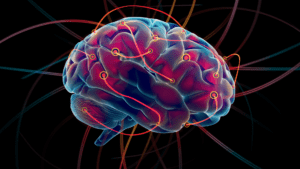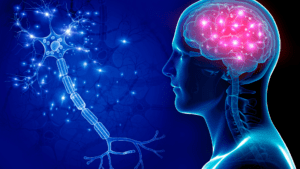Social anxiety disorder, a condition that plagues millions worldwide, has long been a subject of intrigue in the realm of neuroscience. At its core, this disorder is not merely a fleeting emotion but a complex interplay of neural pathways and brain structures. Recent advances in neuroscience have shed light on the intricate neural networks that underpin our social interactions and how they can go awry, leading to heightened feelings of fear and apprehension in social settings.
Understanding the brain’s plasticity, its ability to change and adapt offers a glimmer of hope for those grappling with social anxiety disorder. Neuroplasticity reveals that our brains are not static entities but are malleable, capable of forging new connections and pathways. This means that the very neural circuits that contribute to social anxiety can be rewired and reshaped, paving the way for the alleviation of the disorder’s symptoms.
By delving deep into the wonders of neuroscience, we begin to demystify the enigma of social anxiety disorder. It becomes evident that with the right knowledge and tools, one can harness the power of neuroplasticity, charting a path to freedom from the shackles of overwhelming social fears.
1. Understanding the Neural Roots of Social Anxiety Disorder
Social anxiety disorder, often mistaken for mere shyness or introversion, is a condition deeply rooted in the brain’s intricate networks. From a neuroscientific perspective, it’s essential to recognize that this disorder isn’t just about feeling nervous in social situations. It’s about how the brain processes social interactions and how certain neural pathways can amplify feelings of fear and apprehension.
Signs and Symptoms: More Than Just Shyness
- Physical Reactions: Individuals with social anxiety disorder often experience rapid heartbeat, sweating, and trembling when faced with social situations.
- Avoidance Behavior: A strong desire to avoid social interactions or events, even if they wish to participate.
- Intense Fear: A persistent fear of being judged or embarrassed in front of others.
- Overthinking: Ruminating about past social interactions and excessively worrying about upcoming ones.
The Brain’s Role in Social Anxiety

The amygdala, a small almond-shaped structure in the brain, plays a crucial role in processing emotions, especially fear. In individuals with social anxiety disorder, the amygdala tends to be hyperactive, making them more responsive to social threats. Additionally, the prefrontal cortex, responsible for rational thinking and decision-making, may not regulate the amygdala’s response effectively.
Neuroplasticity offers a glimmer of hope. This concept refers to the brain’s ability to reorganize itself by forming new neural connections. With the right interventions, it’s possible to “rewire” the brain and alleviate the symptoms of social anxiety disorder.
What Causes This Disorder?
While the exact cause remains elusive, a combination of genetic factors, brain chemistry, and life experiences contribute to the development of social anxiety disorder. Early traumatic social experiences, such as bullying or public humiliation, can shape the brain’s response to social situations in the future.
In the upcoming sections, we’ll delve deeper into the treatments that leverage the power of neuroplasticity and offer insights into managing and potentially overcoming social anxiety disorder.
2: Decoding the Signs and Symptoms: A Brain’s Cry for Help
When it comes to understanding social anxiety disorder, it’s crucial to recognize the signs and symptoms that manifest not just behaviorally but also neurologically. The brain, in its intricate design, sends out signals that something isn’t quite right.
Neurological Underpinnings of Common Symptoms
- Overwhelming Fear in Social Situations: The heightened activity in the amygdala, as mentioned earlier, can make social interactions seem threatening, even if they’re not. This overactivity can lead to an overwhelming sense of dread or panic in seemingly everyday situations.
- Physical Symptoms: Trembling, sweating, and a rapid heartbeat are more than just signs of nervousness. They’re the body’s physiological response to the brain’s perception of a social “threat.”
- Avoidance of Social Interactions: The brain’s desire to protect itself from perceived threats can lead to avoidance behaviors. This isn’t just a preference for solitude; it’s a protective mechanism.
Brain’s Response to Perceived Judgement
One of the hallmarks of social anxiety disorder is the fear of being judged. From a neuroscientific perspective, areas of the brain associated with self-awareness and self-perception, such as the anterior cingulate cortex and the insula, become more active. This heightened activity can lead to an increased perception of judgment or criticism, even if none exists.
The Role of Memory in Social Anxiety
The hippocampus, a region of the brain crucial for memory, plays a significant role in social anxiety disorder. Past negative social experiences can be stored and recalled, amplifying feelings of apprehension in future social situations. The brain, in its attempt to protect itself, might bring up these memories as a warning, further fueling the cycle of anxiety.
In the next section, we’ll explore the transformative power of neuroplasticity and how understanding the brain’s adaptability offers hope for those battling social anxiety disorder.
3: Harnessing the Brain’s Power: Neuroplasticity and Treatment Pathways
The brain’s dynamic nature offers a beacon of hope for those grappling with social anxiety disorder. By understanding and leveraging the principles of neuroplasticity, individuals can embark on a transformative journey toward liberation.
Neuroplasticity: The Brain’s Adaptive Marvel

Neuroplasticity is the brain’s remarkable ability to reconfigure its connections and pathways throughout an individual’s life. This means that the entrenched neural pathways that contribute to social anxiety disorder can be reshaped, leading to potential relief and healing.
Neuroscience-Based Interventions
Harnessing the power of neuroplasticity, several interventions can be employed to reshape the brain’s response to social stimuli:
- Brain Training Exercises: Specific exercises designed to challenge and retrain the brain can help alter the neural patterns associated with social anxiety. Over time, these exercises can help the brain form new, healthier connections, reducing the intensity of anxiety responses.
- Pharmacological Approaches: Some medications, primarily antidepressants, work by modifying the levels of neurotransmitters in the brain. By restoring chemical balance, these drugs can help recalibrate the brain’s response to social situations.
- Mindful Exposure: Gradually and mindfully exposing oneself to feared social situations can help the brain relearn and form new associations. Over time, this can reduce the brain’s heightened response to such scenarios.
Lifestyle Adjustments with Neurological Benefits
Incorporating certain lifestyle changes can have profound neuroscientific benefits:
- Physical Activity: Regular exercise stimulates the release of endorphins and promotes the growth of new neurons, aiding in the brain’s ability to manage stress and anxiety.
- Balanced Nutrition: Consuming brain-boosting nutrients, such as omega-3 fatty acids, can support neural health and potentially alleviate symptoms of social anxiety disorder.
- Restorative Sleep: Proper sleep is essential for neural repair and consolidation. A well-rested brain is better equipped to handle stressors and can aid in the healing process.
As we progress in our exploration, the next sections will delve deeper into the remaining keys, unlocking further insights from the realm of neuroscience. Stay with us as we continue to demystify social anxiety disorder and reveal the transformative potential of the brain.
4: The Brain’s Resilience: Overcoming Social Anxiety’s Neural Grip

The brain’s inherent resilience and adaptability are central to understanding how one can navigate and potentially overcome the challenges posed by social anxiety disorder. By tapping into the brain’s natural mechanisms, individuals can find pathways to liberation.
Brain’s Natural Defense Mechanisms
Our brains are equipped with natural defense mechanisms that can be harnessed to combat the effects of social anxiety:
- Stress Response Regulation: The brain has a built-in system to regulate stress responses. By understanding and working with this system, individuals can learn to modulate their reactions to anxiety-inducing social situations.
- Neural Rewiring Through Positive Experiences: Engaging in positive social interactions, even if they’re small, can help in rewiring the brain. Over time, these positive experiences can counterbalance previous negative ones, reshaping the brain’s perception of social scenarios.
The Role of the Environment in Shaping Neural Responses
The environment plays a pivotal role in influencing the brain’s response to social stimuli:
- Safe Social Environments: Creating or seeking environments where one feels safe and accepted can significantly reduce the brain’s threat response, allowing for more comfortable social interactions.
- Consistent Positive Reinforcement: Regularly receiving positive feedback and reinforcement in social settings can gradually reshape the brain’s expectations and reduce anticipatory anxiety.
The Power of Visualization and Mental Rehearsal
From a neuroscientific perspective, the brain often doesn’t differentiate between vividly imagined scenarios and real ones. By regularly visualizing positive social interactions and outcomes, individuals can train their brains to respond more positively in actual social situations.
In our next section, we’ll explore the final key, offering a comprehensive understanding of how continuous learning and growth can further aid in liberating oneself from the clutches of social anxiety disorder.
5: Embracing Neuroscience-Based Life Coaching: The Final Key to Brain Liberation
The path to overcoming social anxiety disorder is illuminated by understanding the brain’s intricate workings. Our unique Neuroscience-based life coaching services offer a beacon of hope, providing individuals with tailored strategies rooted in the latest scientific research.
A Personalized Approach to Neural Liberation
Every individual’s experience with social anxiety disorder is unique, shaped by their distinct neural patterns and life experiences. Recognizing this, our life coaching services are meticulously tailored to cater to each individual’s needs:
- Customized Coaching Plans: By delving deep into the neural intricacies of each client, we craft coaching plans that address specific challenges, ensuring targeted and effective interventions.
- Harnessing Neuroplasticity: Leveraging the brain’s remarkable ability to adapt and change, our techniques focus on reshaping neural pathways. This approach not only alleviates symptoms but also empowers individuals to manage their social anxiety proactively.
Empowerment Through Cutting-Edge Neuroscience
Our unwavering commitment to the evolving field of neuroscience ensures that our clients are always benefiting from the most recent and impactful findings:
- Neuroscientific Tools and Strategies: Our comprehensive set of tools and methodologies are meticulously designed to harness the power of neuroplasticity. This approach guides the brain towards healthier and more adaptive responses to social stimuli.
- Informed Progress Tracking: We consistently evaluate the progress of our clients, adjusting our strategies to ensure they are on the path of continuous growth and positive neural adaptation.
- Knowledge as a Pillar of Growth: We are rooted in the belief that knowledge is transformative. When individuals grasp the neuroscientific underpinnings of their challenges, they stand in a position of strength. Our coaching sessions are designed not just to guide but to educate, ensuring our clients are empowered with deep insights about their brain’s functioning.
In conclusion, our Neuroscience-based life coaching services are a beacon of hope, representing the perfect blend of scientific rigor and personal growth. By merging the latest in neuroscience with empathetic coaching, we pave a transformative path for those aiming to liberate themselves from the confines of social anxiety disorder, steering towards a life of freedom and profound fulfillment.
#socialanxietydisorder #neuroscienceinsights #neuralpathways #neuroplasticity #brainadaptability #anxietytreatments #brainbasedcoaching #neuralrewiring #positivebraintraining #neuroscientificinterventions #braindefensemechanisms #stressresponsetuning #neuroimagingtechniques #lifelongneuroplasticity #adaptivebrainlearning #neurotransmitterbalance #neuroscientificlifecoaching #personalizedneuralstrategies #brainliberation #continuousneuralmonitoring


